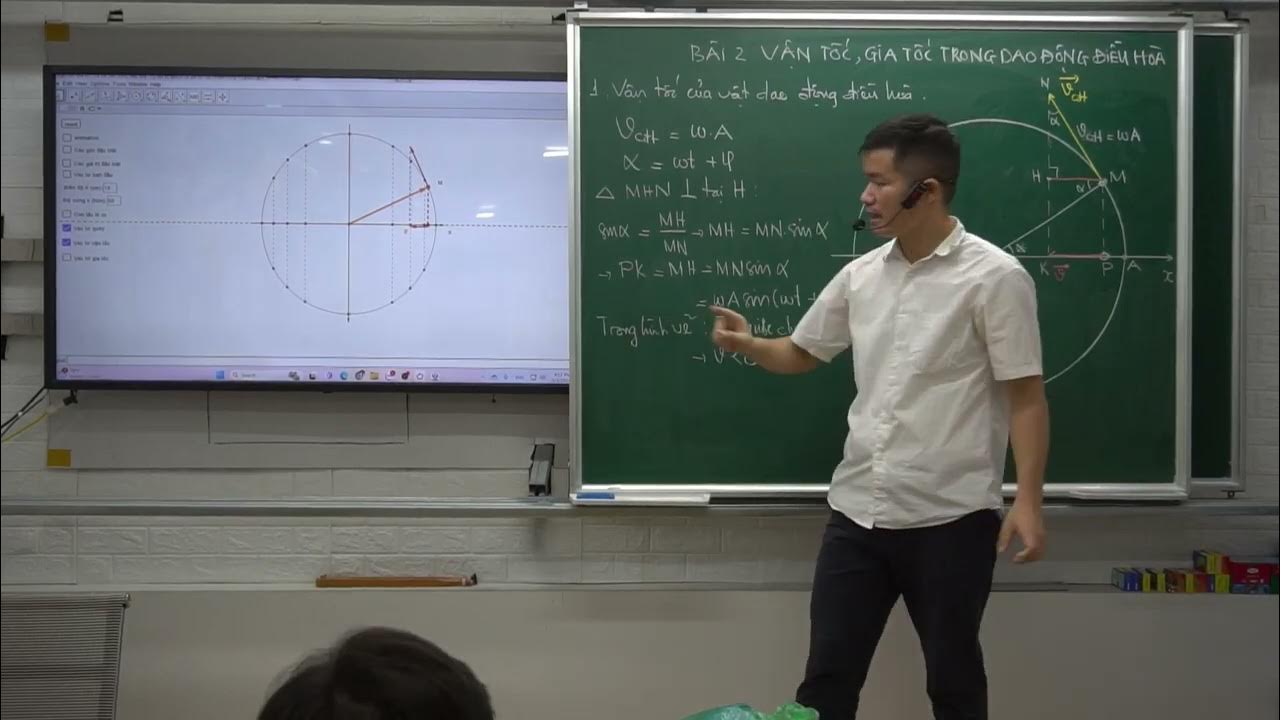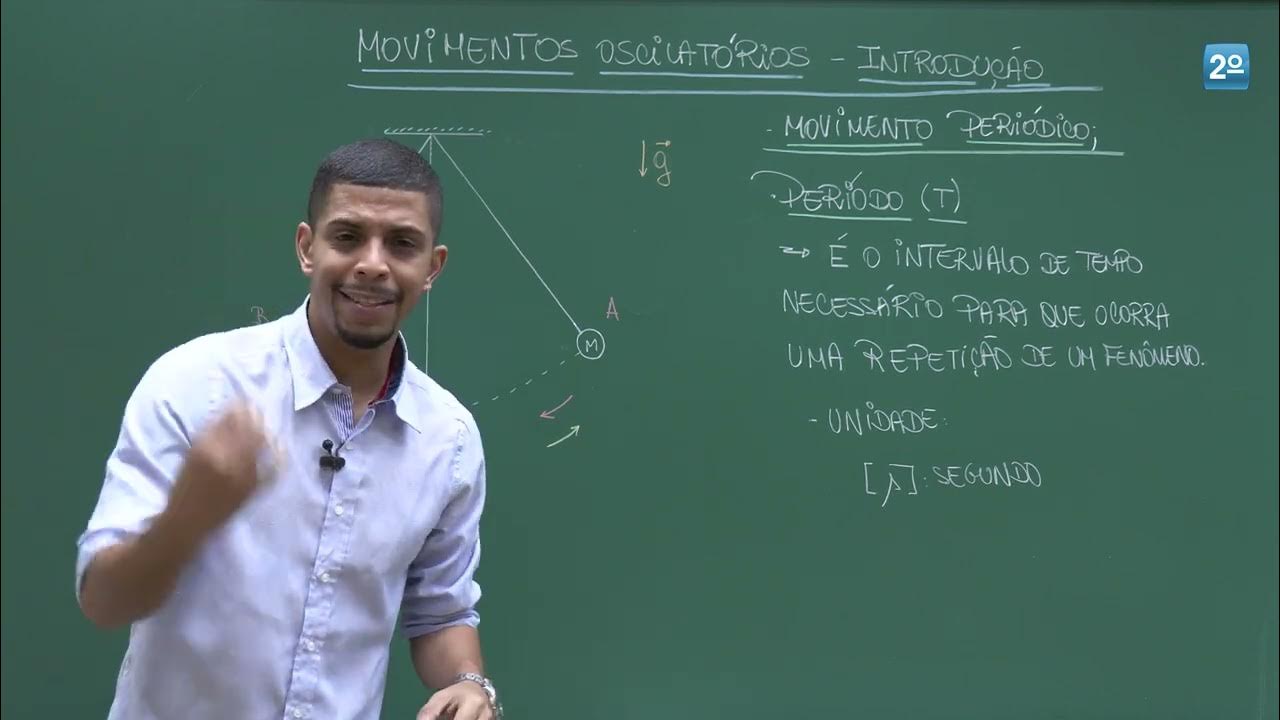Universo Mecánico 16 Movimiento Armónico
Summary
TLDRThis video explores the concept of simple harmonic motion, its historical significance, and its application in timekeeping. It begins with a story about Galileo's discovery of the pendulum's oscillation period, leading to the development of early clocks. The script then delves into the mechanics of harmonic motion, describing how forces act to restore equilibrium in systems like springs and pendulums. The video also highlights how this principle revolutionized time measurement, providing a stable method for accurate timekeeping, which was crucial for navigation and the development of modern precision clocks.
Takeaways
- 😀 Galileo discovered that a pendulum's oscillation time remains constant, regardless of the arc size or the speed of oscillation.
- 😀 The concept of harmonic motion was essential for the development of accurate time measurement systems, such as early precision clocks.
- 😀 The force responsible for restoring an oscillating object to its equilibrium position is proportional to its displacement, described by the equation F = -kx.
- 😀 The harmonic oscillator's movement is cyclical, with constant periods of oscillation, even when the amplitude of the oscillation decreases over time.
- 😀 In music, instruments rely on harmonic vibrations, where the frequency and tone remain constant, even when the amplitude decreases.
- 😀 The development of mechanical clocks in history made progress with the use of harmonic motion principles, ensuring greater precision in timekeeping.
- 😀 Time measurement systems evolved through various stages, from ancient methods like sundials and water clocks to the advent of mechanical clocks.
- 😀 The movement of natural systems like the heart, seasons, and celestial bodies follows cycles, which are governed by harmonic motion.
- 😀 Galileo's discoveries about pendulums and falling bodies contributed to the understanding of time and motion, eventually leading to Newton's laws of motion.
- 😀 Modern timekeeping systems, including quartz clocks, are based on harmonic motion, utilizing millions of oscillations per second to measure time with high precision.
Q & A
What is the main topic of this video?
-The video discusses the concept of simple harmonic motion, how it is linked to the second law of Newton, and its applications in understanding time and precision measurement.
How does Galileo's discovery relate to simple harmonic motion?
-Galileo's discovery of the consistent time it took for a lamp to complete each swing, regardless of its arc size, was a precursor to understanding periodic motion. This insight led to the use of pendulums for measuring time, a key aspect of simple harmonic motion.
What is the key principle behind simple harmonic motion?
-Simple harmonic motion occurs when a restoring force proportional to the displacement from an equilibrium position acts on a mass, causing it to oscillate around that position.
How does the equation f = -kx describe simple harmonic motion?
-The equation f = -kx shows that the restoring force (f) acting on a mass is directly proportional to its displacement (x) from the equilibrium position and is directed towards that position. The constant k represents the stiffness of the spring or restoring force.
Why does the period of a mass-spring system not depend on amplitude in simple harmonic motion?
-The period (time for one complete cycle) of simple harmonic motion is independent of the amplitude, meaning it remains constant regardless of how far the object moves from the equilibrium position, as long as the system behaves ideally without damping.
What role did Galileo's observation of the pendulum play in the development of time measurement?
-Galileo discovered that a pendulum of a certain length oscillates with a consistent period, independent of its mass. This observation led to the use of pendulums in early clocks, providing a more accurate way to measure time.
How did early mechanical clocks improve timekeeping?
-Early mechanical clocks, which used oscillating parts like weights, pulleys, and gears, marked a significant improvement over previous timekeeping devices like water clocks and sundials by providing more consistent and repeatable time intervals.
What is the relationship between simple harmonic motion and musical instruments?
-Musical instruments rely on oscillating systems (e.g., strings, air columns) that behave similarly to simple harmonic oscillators. The frequency of oscillation determines the pitch of the sound produced, and this frequency remains constant even as the amplitude decreases.
How does the concept of simple harmonic motion apply to the study of the universe?
-Simple harmonic motion is a fundamental principle governing various physical systems, from pendulums to planetary orbits. Understanding it helps explain the repetitive cycles in nature, like the oscillations of galaxies or the motion of atoms in a crystal lattice.
How did the development of precise time measurement impact navigation?
-Accurate timekeeping, made possible by advancements in understanding simple harmonic motion, allowed navigators to precisely calculate longitude by comparing local time with the time at a known reference point like Greenwich, which was crucial for safe and accurate sea travel.
Outlines

This section is available to paid users only. Please upgrade to access this part.
Upgrade NowMindmap

This section is available to paid users only. Please upgrade to access this part.
Upgrade NowKeywords

This section is available to paid users only. Please upgrade to access this part.
Upgrade NowHighlights

This section is available to paid users only. Please upgrade to access this part.
Upgrade NowTranscripts

This section is available to paid users only. Please upgrade to access this part.
Upgrade NowBrowse More Related Video

Dạng 1 Vận tốc của vật dao động điều hòa

Pengantar Materi Getaran dan Gelombang pada Mata Kuliah Fisika Dasar ITK 2020/2021

Comparing Simple Harmonic Motion(SHM) to Circular Motion - Demonstration

Demonstrating What Changes the Period of Simple Harmonic Motion(SHM)

Aula 1 – Movimentos Periódicos e Introdução ao MHS

Dao động điều hòa: Chu kì. Tần số. Tần số góc. Vận tốc và gia tốc của vật dao động điều hòa
5.0 / 5 (0 votes)